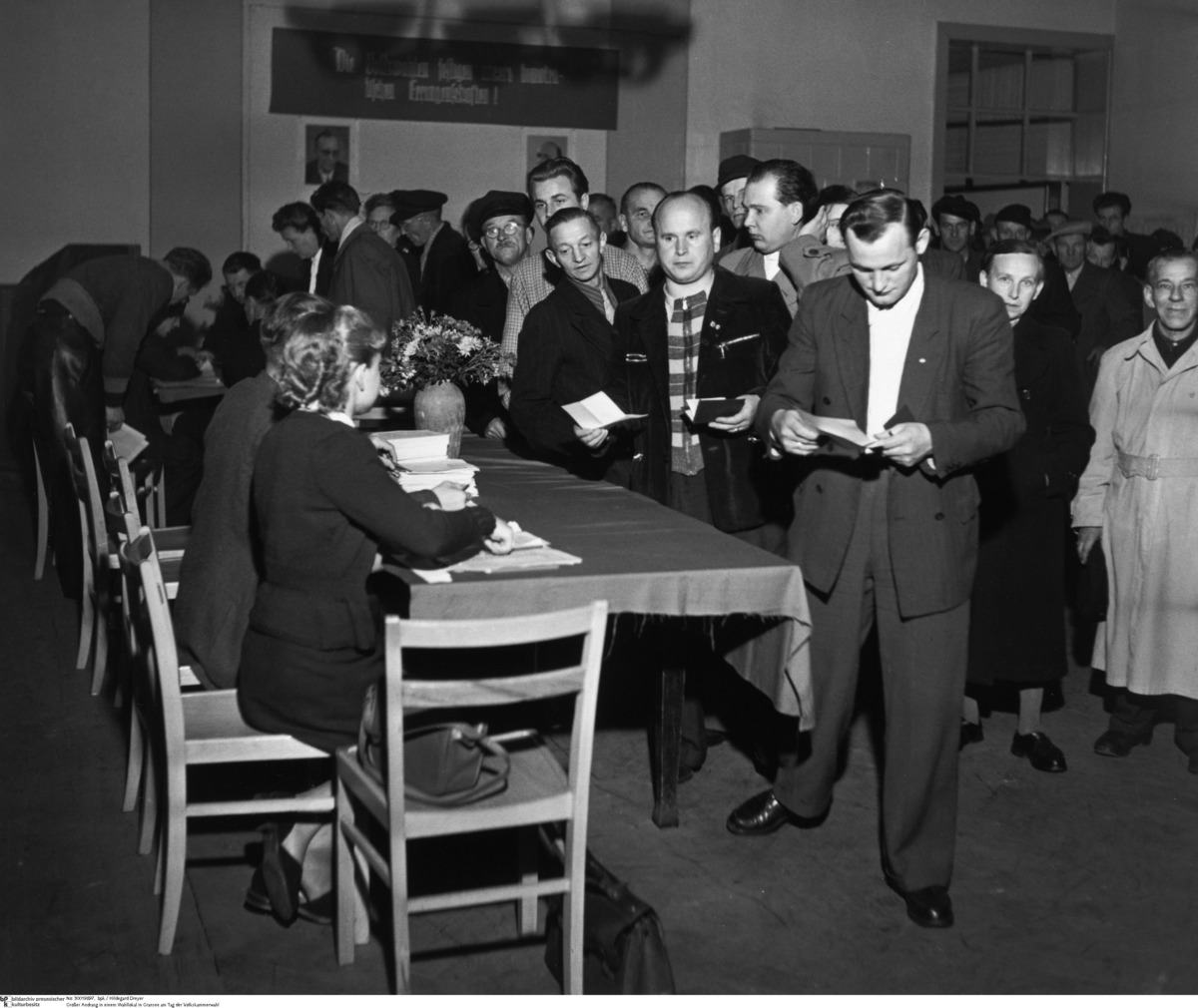Abstract
On July 14, 1945, the anti-Fascist parties in the Soviet occupation
zone (SPD, KPD, CDU, and LDP) decided to form the “Unified Front of the
Anti-fascist Democratic Parties,” called the “Antifa-block.” After the
KPD and the Eastern SPD had been coerced to merge to form the SED in
April 1946, the Communists increased their efforts to establish their
claim to leadership in the block. The Democratic Farmers’ Party of
Germany and the National Democratic Party of Germany were founded under
the guiding control of the SED, and in August/September 1948 they were
included in the block, along with the Free German Trade Union
Federation, in order to ensure the SED’s dominant control. For the same
reason, the Free German Youth, the Democratic Women’s Association of
Germany, and the GDR Cultural League also became part of the block later
on. Since the block parties recognized the leading role of the SED, they
were virtual conveyor belts for SED policies. The unified-list principle
had been in effect since the election to the Third German People’s
Congress in May 1949, further ensuring SED majorities and turning
elections into a form of acclamation. On October 17, 1954, the
“elections” for the regional conferences and the People’s Parliament
[Volkskammer] took place; under the
circumstances, only the rate of participation – 98.4 percent – was
surprising; the vote for the unified list – 99.45 percent – was not.
